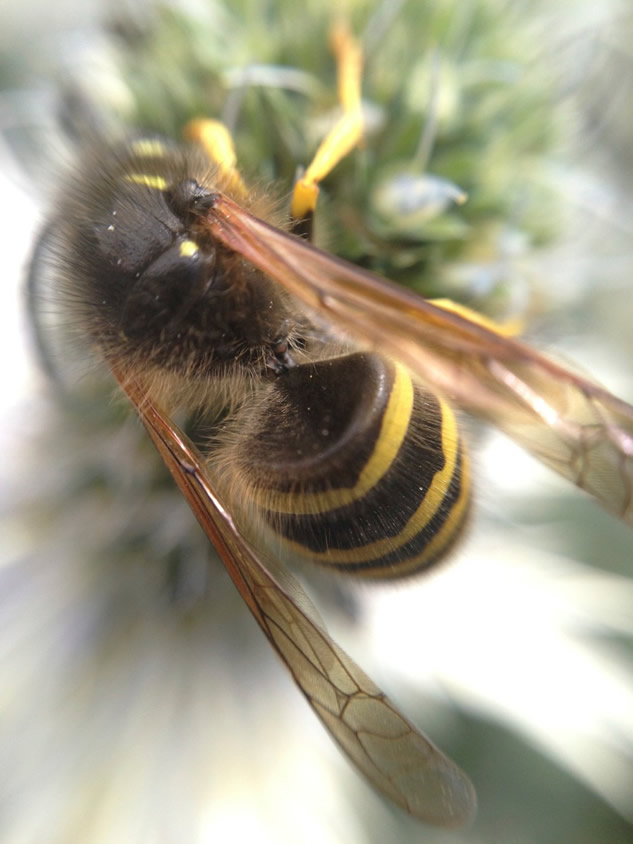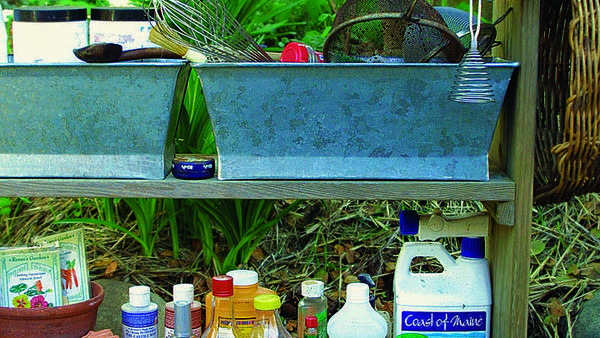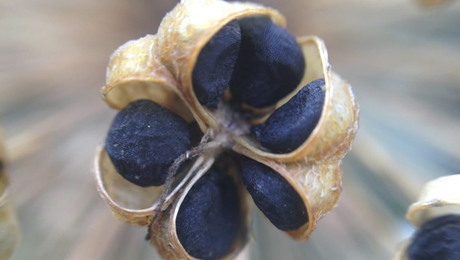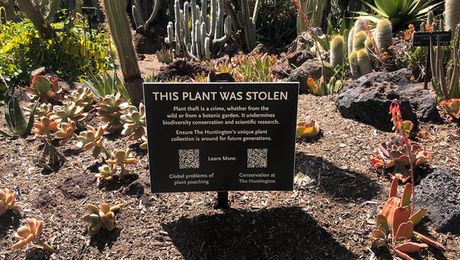
It is thirty-odd years since I became a professional gardener (I know, I look far too youthful and fresh faced to have been around that long), and over those three decades a lot of things have changed. Mowers have become lighter, tools better designed, gloves more thornproof. Moreover, new plants have been introduced, the internet was invented, compost is lighter, and, most significantly, we have begun to garden in a much less selfish way. We try harder to garden in concert with nature rather than turning our gardens into a battlefield where every insect is eradicated. I remember shops selling worm killer to stop worm casts from adulterating perfect lawns. I think I prefer gardens full of wildlife—some of it benign, some of it predatory, but all of it interesting.
 Ladybirds Ladybirds |
 Ladybird larva Ladybird larva |
In the days before chemicals, the vengeful gardener had to come up with even more creative solutions. There was a chap called Thomas Hill who wrote what is probably the first gardening book in 1563 (during the reign of Queen Elizabeth I). Called The Arte of Gardening, it contained all sorts of useful tips.

For example, old Thomas is very concerned that small plants are vulnerable to predators and advises that “by all meanes possible that can bee devised either with fire, smoake or Iron, they be bitterly expelled and driven out of the Garden.”
To get rid of moles, he has this advice:
You may take all the Moles in your garden by an easie manner: If that you get a quick Mole, put the same into a deepe earthen pot, setting the edge to the earth: which Mole, after a while feeling himselfe thus inclosed, will crye out, and after the other Moles in that ground doe thus heare him cry, they will hastily draw neere unto him, and minding to helpe him forth, will so fall into the pot. And now by this safe means, if you will, you may take and destroy all the Moles in your garden.
I am not that convinced by this one, as moles are well known for being extremely antisocial and solitary. Their idea of hell is a dinner party. (The collective noun for a group of moles, incidentally, is a labour.)
Moths are pretty unwelcome too. In their case, you take the stomach of a sheepe new killed, not washed, but having all the filth hanging theron, which lightlie cover with earth in that place, where they most swarme in the garden, and after two dayes, you shall finde a marvellous companie of Moths and other flies heaped thereupon, which either carry away, or bury very deepe in that place. I would make sure you bury it very deep indeed, as I would not like to come across that again too soon.
Mice are even now a complete pain, particularly when it comes to eating tulip bulbs or sweet pea seedlings. Traps are all very well, but how about this? Garden Mice may bee driven away, if you sprinckle the beds with the Ashes of the Weesel, or with that water sprinckled on the beds in which a Catte hath been walked.
Sadly, he does not give any advice about how to catch the weasel or how to catch the ‘catte water,’ which, I suspect, may be a euphemism for cat pee.
His remedy for caterpillars involves scattering bloody twigs around the place, which is not really that imaginative, especially compared to another remedy suggested a hundred years later in the New Book of Knowledge (1697):
To destroy Caterpillars: Besmear all the bottom of the Tree with Tar, then get a great store of Ants; put them into a Bag, and draw the same with a Cord unto the Tree, and let it hang there, so that it touch the Body of the Tree; and the Ants being prevented to go from the Tree by reason of the Tar, will want for Food, eat and destroy the Caterpillars, without hurting any of the Fruit or Leaves.
It is not just pests that Mr. Hill has his eye on: he has a foolproof way of protecting your garden from the elements. To protect from hail he suggests that you compass your allies [alleys] about with the skin of a Sea-Calfe, or else the best Hiena or the Crocadile, and to hang any of these skinnes also at the entrance or comming in of the garden.
Even in a small garden this would require more dead animals than most of us have ready access to. Even more extraordinary is his suggestion that in order to stave off the ill effects of lightning you should use the “hide of a hippopotamus.”
Life was very exciting in those days! Still, I feel that we are in a better place today, and I observe that nature finds its own equilibrium. After all, if there are no aphids, for example, then what will the ladybirds and beetles eat? If there are no slugs, then how can we feed toads, hedgehogs, or birds?
At the risk of sounding like a bit of an old hippy, I believe there is room for everybody in the garden.
 |
 |
All photos by James Alexander-Sinclair
Fine Gardening Recommended Products

A.M. Leonard Deluxe Soil Knife & Leather Sheath Combo
Fine Gardening receives a commission for items purchased through links on this site, including Amazon Associates and other affiliate advertising programs.


















Comments
Great advice! I think I might just try to find that book at the library--I love reading old books :) Regarding caterpillars, for anyone interested, I've also used Safer Brand's natural caterpillar killer and it works wonders. You can read about it here: http://www.saferbrand.com/blog/get-rid-eastern-tent-caterpillars/
I am a regular reader of pest control journal published by Pest Control Armonk. You can get many ideas from there and also can apply to get rid of pest from homes and garden.
-> If you would like extra payment in the range of 50-300 dollars a day for doing work over internet on your computer from home for few h every day then check this out -> <-
All of those vintage pest control remedies sound quite nonsensical to a 21st C. ear. But, should we conclude we have little to learn from old garden tending strategies from previous eras? A friend who is now reading the 1894 book "An Island Garden" by Celia Thaxter seems ready to accept all the horticultural "wisdom" being offered to its readers. I find myself more skeptical.
Log in or create an account to post a comment.
Sign up Log in